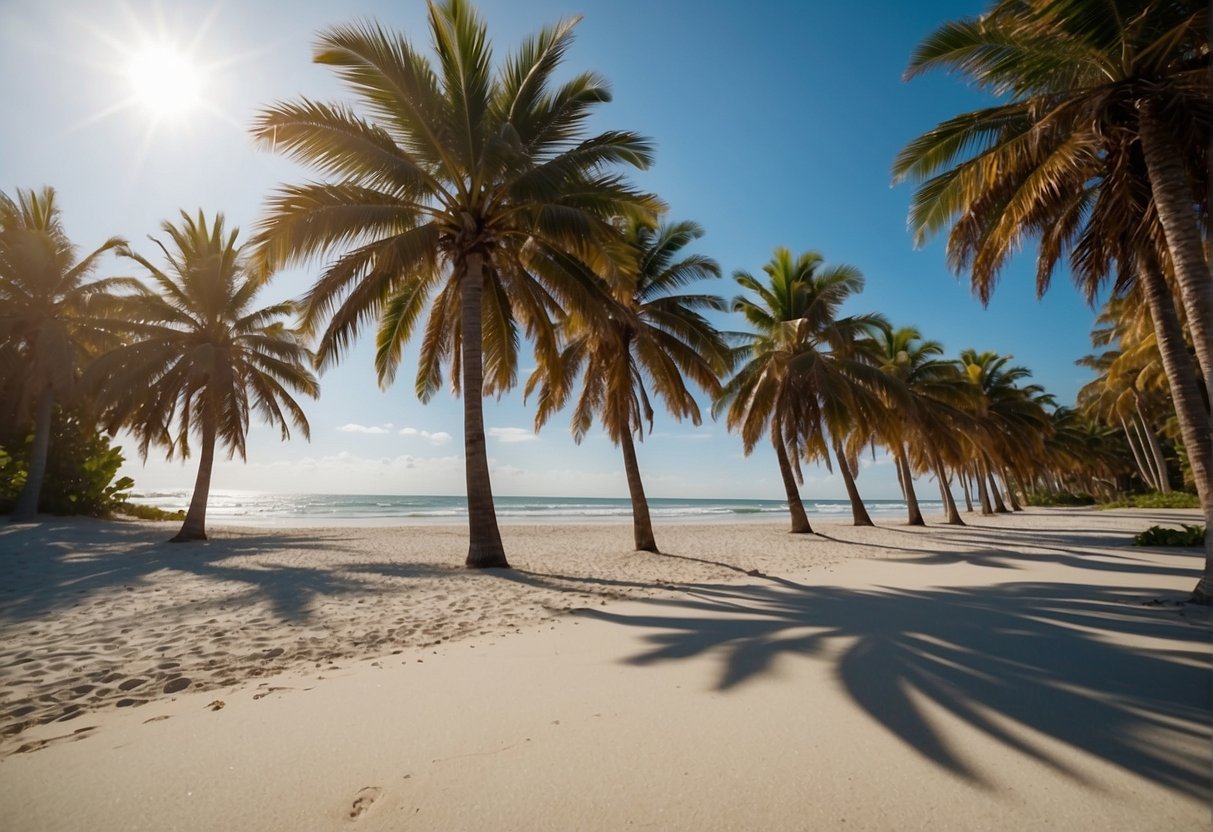Beach Driving Regulations in Florida
Driving on the beach in Florida is a unique and exciting experience that allows you to get up close and personal with the waves and sand.
However, it is important to understand the regulations and guidelines to ensure a safe and enjoyable experience for everyone.
In this section, we will discuss the regulations and rules for beach driving in Florida.
Permit Requirements for Beach Driving
In Florida, a permit is required to drive on the beach in most areas.
The permit can be obtained from the local county government or the state government.
The cost of the permit varies depending on the location and the duration of the permit.
For example, in Volusia County, the cost of a daily permit is $20, while an annual permit costs $100.
It is important to note that the permit does not guarantee vehicle access to the beach, as some areas may be closed due to high tide or other factors.
Speed Limit and Traffic Rules on Florida Beaches
The speed limit for beach driving in Florida is 10 miles per hour, and it is strictly enforced.
It is also important to follow the traffic rules, such as driving on the right side of the beach and yielding to pedestrians.
In some areas, there may be two-way traffic, so it is important to be aware of your surroundings and drive cautiously.
Protecting Wildlife During Beach Driving
Florida is home to many species of wildlife, including sea turtles, which are protected by law.
During sea turtle nesting season, which runs from May to October, it is important to be extra cautious and avoid driving on the beach at night.
It is also important to avoid driving in areas where sea turtle nests are located, as the vehicles can damage the nests and harm the hatchlings.
In addition, it is important to be aware of other wildlife, such as birds and crabs, and to drive slowly to avoid harming them.
Accessible Beaches for Driving in Florida

If you’re looking for a unique beach experience, Florida has several beaches where driving is allowed.
With over 1,350 miles of coastline, Florida is home to some of the best beaches in the world.
In this section, we’ll cover the most popular driving beaches in Florida.
Daytona Beach: A Hub for Beach Driving
Daytona Beach is one of the most popular driving beaches in Florida.
The 23-mile-long beach is known for its hard-packed sand, which makes it perfect for driving.
The beach also hosts several events throughout the year, including NASCAR racing at the Daytona International Speedway.
If you’re looking for outdoor activities, Daytona Beach has plenty to offer, including fishing, kayaking, and surfing.
St. Augustine to New Smyrna: Coastal Driving Spots
The stretch of coastline between St. Augustine and New Smyrna Beach is also popular for driving.
This area is home to several beaches where driving is allowed, including St. Augustine Beach and New Smyrna Beach.
St. Augustine Beach is known for its historic landmarks, while New Smyrna Beach is known for its dune buggy rides.
Panhandle Beaches: Scenic Routes on Highway 30A
If you’re looking for scenic routes, the Panhandle beaches are a must-visit.
Highway 30A is a scenic road that runs along the coast of Walton County.
The road passes through several beach towns, including Grayton Beach and Grayton Beach State Park.
Both beaches are known for their white sand beaches and clear blue waters.
Amenities and Activities Near Driveable Beaches

When visiting driveable beaches in Florida, there are plenty of amenities and activities available to make your trip memorable.
In this section, we will discuss some of the top amenities and activities near driveable beaches in Florida.
Parking and Accessibility Features
Parking is an important aspect to consider when visiting driveable beaches in Florida.
Most driveable beaches have parking lots available for a fee, and some even offer free parking.
Many beaches have accessibility features such as ramps and boardwalks to make it easier for visitors with disabilities to access the beach.
Recreational Activities and Events
There are plenty of recreational activities and events available near driveable beaches in Florida.
Daytona Beach, for example, is home to the Daytona International Speedway, where visitors can experience NASCAR racing and other events.
Golf enthusiasts can enjoy a round of golf at one of the many golf courses near Gulf of Mexico beaches such as Naples and Palm Beach.
Seaside and Siesta Key offer a wide range of outdoor activities such as hiking, biking, and water sports.
Fort Walton Beach has a pier where visitors can fish or take a stroll.
Frequently Asked Questions About Driving in Florida Beaches
What are the regulations for driving on Daytona Beach?
Driving on Daytona Beach is allowed from sunrise to sunset, and vehicles must stay within the designated traffic lanes.
The speed limit is 10 mph, and drivers must yield to pedestrians.
It is also important to note that Daytona Beach does not permit alcohol on the beach or in vehicles.
How much is the fee for beach driving in Florida?
The fee for beach driving varies depending on the location and duration of the visit.
For example, the fee for driving on Daytona Beach is $20 per day, while the fee for driving on St. Augustine Beach is $10 per day.
It is advisable to check the specific beach’s website for the most up-to-date information on fees.
Which beaches on the Florida Gulf Coast permit vehicle access?
Some of the Gulf Coast beaches that permit vehicle access include Fort Myers Beach, Panama City Beach, and Pensacola Beach.
Each beach has its own set of regulations, so it is important to check the specific beach’s website for details before driving on the beach.
Can you legally drive your car on Destin Beach?
No, Destin Beach does not permit vehicles on the sand.
However, there are designated parking areas nearby where visitors can park their cars and access the beach on foot.
Are there any beaches in Florida where parking on the sand is allowed?
Yes, some beaches in Florida do allow parking on the sand.
For example, New Smyrna Beach permits parking on the sand in designated areas.
However, it is important to note that parking on the sand is not permitted at all beaches in Florida.
Is it possible to drive on Cocoa Beach, and what are the rules?
No, driving on Cocoa Beach is not permitted.
However, there are designated parking areas nearby where visitors can park their cars and access the beach on foot.